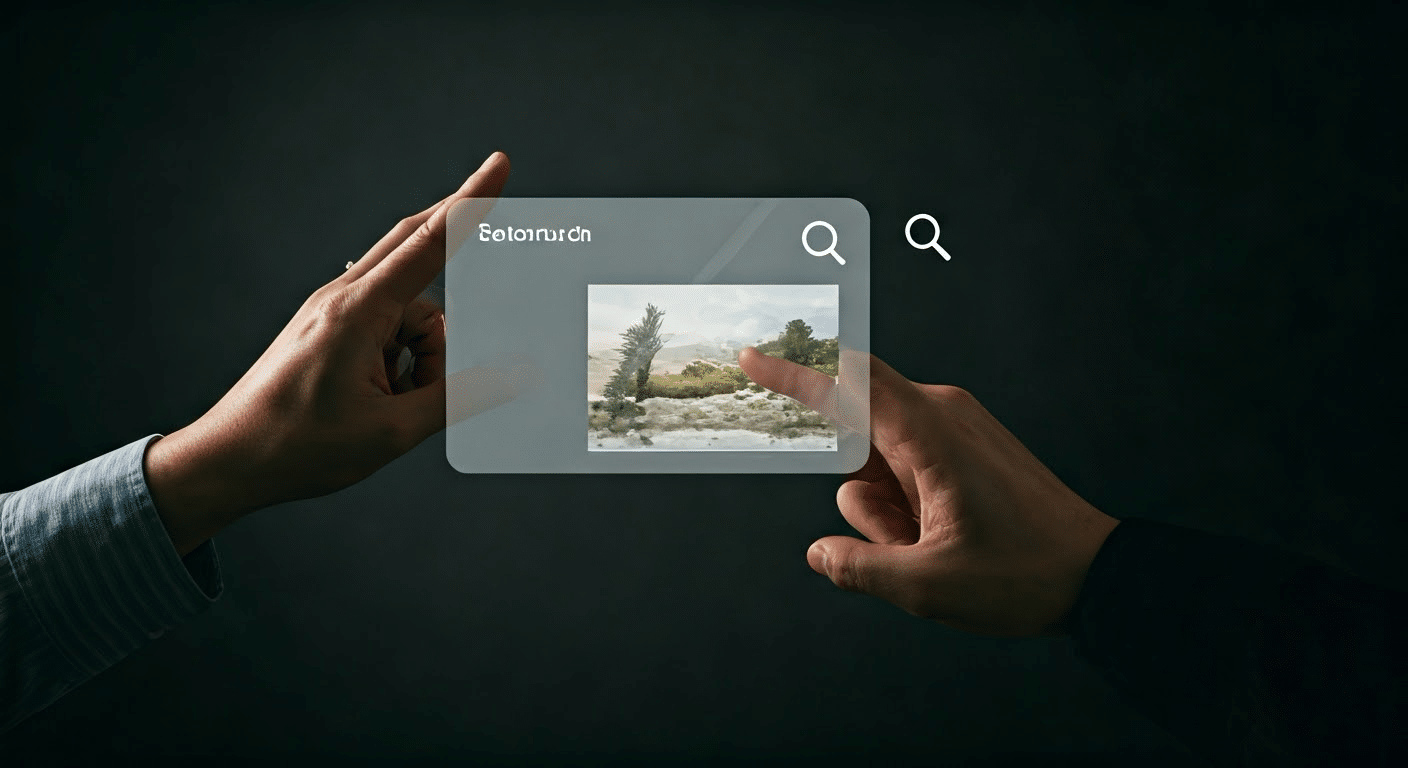Unlocking Tomorrow: The Hidden Science of Reverse Image Search
Last Updated on March 4, 2025 by admin
In my experience, finding the best reverse image search tool has been invaluable. I’ve tested various platforms, and these tools transformed how I search images across the internet. The reverse image search engine offers a unique way to discover visually similar images, unlike traditional text-based searches. Utilizing reverse image lookup, I’ve identified the source of photos and even uncovered image plagiarism. Uploading images or pasting an image URL in the search bar provides instant results. Whether on Image Recognition App or mobile devices, this innovative image search tool helps me find similar images quickly. It’s a great tool for anyone exploring visual content online.
Understanding How Reverse Image Search Works
In my experience, the best way to grasp Id6501988364 is by diving into how it operates. The process involves using an image search engine to input an image, rather than text, to find similar images or related information. When I first tried a reverse image search tool, I uploaded an image to the search bar. The tool then analyzed the image’s features, comparing them against an extensive database. This helped me find visually similar images across the internet, including where the image appears online.
The tools I’ve tested, like Google Lens, offer various methods for Details. You can perform a search by image using three main steps:
- Upload the image directly from your device.
- Paste an image URL into the search bar.
- Use the camera icon to drag and drop images.
This process allows the search engine to provide users with a list of similar photos and the original source. What’s particularly interesting is how a reverse image finder can identify a picture even if it’s been altered. I’ve noticed that the free reverse image search options yield precise results, offering a wealth of related information. These tools are invaluable for anyone wanting to find similar images or verify the authenticity of a picture on the web.
Top Tools for Reverse Image Search
In my experience, finding the best reverse image search tools can transform how we discover information online. I’ve tested various tools and found some standouts. Google Images is a staple in this realm; its reverse image search engine provides a robust tool for finding similar images and relevant information. By simply uploading images, users can perform a reverse search effortlessly.
Building on this, TinEye stands out for its dedicated reverse image search tool. It excels at finding specific image matches and has helped me trace the origin of many photos online. It’s particularly useful when traditional text-based searches fall short. Another great option is the Bing Search Engine, which provides a reliable reverse photo search. It often uncovers different results compared to Google, offering a fresh perspective. Reverse Image Search.
- Google Images: Great for finding similar images and reverse picture searches.
- TinEye: Strong reverse image lookup tool for specific image matches.
- Bing: Offers a different angle on reverse search results.
Connected to this, Yandex has impressed me with its ability to search by image. The search engine’s visual search capabilities often discover images that other tools miss. This naturally brings us to the importance of using multiple tools for comprehensive reverse image searches. I’ve found that combining these tools provides users with a broader view and more accurate search results.
Comparing Google Images with Other Reverse Image Search Tools
In my experience, Competitor_Url offers a reliable starting point for reverse image searches. It’s convenient and integrated into the Google ecosystem. By simply right-clicking on a photo in the browser, I can instantly search for similar images. But how does it compare to other reverse image search tools?
Building on this, I’ve tested several tools to find the best reverse image search options. Each tool has its strengths and weaknesses. Here’s how they stack up: Reverse Image Search Iphone.
- Google Image Search: Quick and easy, especially for everyday searches. The extensive database is a plus.
- Tineye: Known for its accuracy. It excels in tracking image usage across the web.
- Bing Visual Search: Offers a robust image search feature, providing users with detailed image lookup results.
- Yandex: Surprisingly effective, especially for finding similar images not typically found on Western search engines.
What’s particularly interesting is the variety of reverse image lookup tools available. Most tools support both desktop and mobile platforms, making them versatile and accessible. While some focus on specific image features, others provide a broader search engine capability. The choice depends on what you’re searching for—whether it’s a picture’s origin, duplicates, or similar image finders. Each tool has its niche, and I’ve found that no single tool fits all needs. Personally, I often start with Google for its convenience, but I turn to specialized tools for deeper analysis. This approach ensures I get the most comprehensive search results possible.
Exploring Free vs. Paid Reverse Image Search Options

In my experience, reverse image search tools are invaluable for verifying the authenticity of a photo or finding its source. I’ve used both free and paid options, and each has its merits. Free reverse image search tools are easily accessible and often sufficient for casual users. They allow you to perform an image search by uploading a picture or pasting a URL. What Is Google Lens Complete Guide.
When I tried Google Image Search, I found it convenient for quick searches. It provides insights into where an image appears across the web. However, paid reverse image search tools often offer advanced features. These include higher accuracy in identifying similar images, detailed metadata analysis, and even reverse photo search capabilities for commercial use.
- Free Options: Google Image Search, TinEye
- Paid Options: Adobe Stock, Shutterstock
Using a paid reverse image finder, I’ve benefited from comprehensive results that often include high-resolution images. This leads us to the question of necessity. If you frequently need detailed image search results, investing in a paid subscription might be worthwhile. However, for casual image searches, free tools suffice.
Ultimately, the choice between free and paid options depends on your specific needs. Building on this, I’ve found that a mix of free and paid tools can provide a balanced approach. This naturally brings us to consider how these tools fit into our daily internet use and their impact on verifying online content.
Effective Strategies for Using Reverse Image Search
In my experience, reverse image search is a game-changer for verifying photo authenticity. Utilizing this search tool effectively starts with selecting the right platform. I’ve tested several options, and I recommend using a popular search engine like Google for its extensive database. Tineye.
Building on this, here are the steps I follow for optimal results:
- First, ensure your photo is clear and of high quality. This enhances the accuracy of the search.
- Next, choose a search engine that supports reverse image search. I often use Google’s reverse picture search for its efficiency.
- Then, upload the image directly from your desktop or device. Most search engines offer a simple drag-and-drop feature.
Connected to this, I’ve found that reverse image search excels in tracking photo usage across the web. If users want to find similar images or identify a picture, this tool is invaluable. It helps in distinguishing original content from duplicates.
What’s particularly interesting is the role of reverse image search in protecting intellectual property. I’ve used it to monitor the unauthorized use of my photos online. The process is straightforward with the right search engine.
This leads us to the conclusion that reverse image search is essential in today’s internet-driven world. As users, we should leverage these search tools to maintain the integrity and authenticity of the web’s visual content.
Reverse Image Search for Specific Use Cases
In my experience, reverse image search has proven invaluable for various specific use cases. For instance, when I needed to verify the authenticity of a Competitor_Url, I relied on uploading images to a trusted website. This method quickly revealed the original source and helped debunk misinformation.
I’ve found that using a similar picture finder is particularly useful in creative fields. When collaborating on projects, finding inspiration through similar images can spark new ideas. By uploading a picture, users can explore a vast array of similar visuals, enabling a fresh perspective on design. Pimeyes.
- Uploading images to identify products, such as clothing or gadgets, has saved me countless hours.
- Search by image helps track unauthorized use of my photographs across the web.
- Using picture search tools aids in locating higher-resolution versions of beloved images.
Building on this, traditional text-based searches often fall short when specifics are needed. A reverse image search effectively bridges this gap, offering a more targeted approach. I’ve noticed that using different websites can yield varied results, making it essential to diversify search strategies.
Overall, combining various tools and techniques enhances the effectiveness of reverse image search. Whether verifying authenticity or seeking inspiration, leveraging these resources offers a powerful solution for users of all kinds. The ability to upload images and search effortlessly across the internet is a game-changer in today’s digital landscape.
Future Trends in Reverse Image Search Technology
Having explored various reverse image search tools, I’ve noticed exciting trends shaping the future of this technology. One significant trend is the shift from traditional text-based searches to more visual approaches. This change stems from the increasing capability of algorithms to recognize and interpret images. Google Lens.
In my experience, here are some key advancements to watch for:
- Enhanced AI Algorithms: I’ve tested platforms where AI learns to identify objects in photos more accurately. This improvement helps in distinguishing subtle differences between similar pictures.
- Integration with Augmented Reality: I see potential in merging reverse image search with AR, allowing users to point their cameras at objects to gather instant information.
- Improved Mobile Applications: Many apps now offer seamless image uploading, making it easier to search images directly from smartphones.
I’ve also noticed a trend towards browser-based solutions. These eliminate the need for separate apps, allowing users to quickly search images by simply uploading a photo directly on a website. This convenience not only saves time but also enhances user experience. As these trends develop, they’ll revolutionize how we interact with visual content.
In conclusion, the future of reverse image search promises more intuitive and integrated experiences. By embracing these trends, we can expect a more efficient way to explore and understand the visual world around us.







